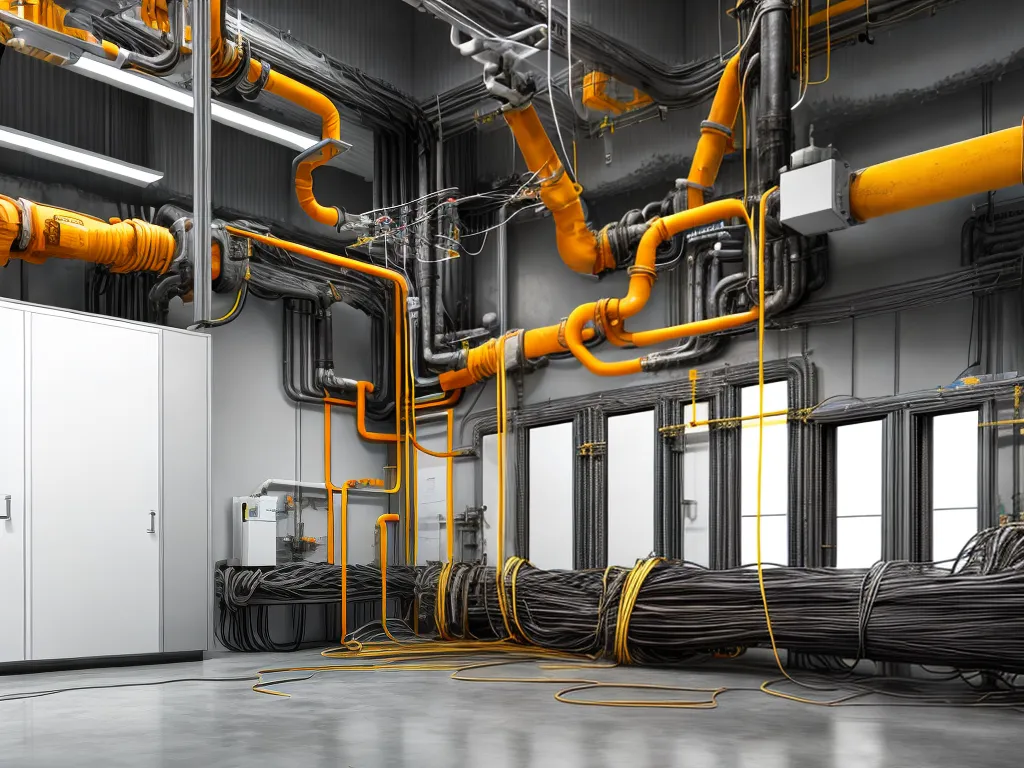
As an electrician working in industrial settings, I often come across wiring standards and codes that are obscur even to most professionals in the field. In this article, I'll highlight some of the lesser known industrial wiring standards and codes that I've encountered over my career.
NEMA WC 70 - Ice Cream Machine Wiring
One of the more unusual industry-specific standards I've worked with is NEMA WC 70, which covers recommended wiring practices for ice cream machines. This standard was developed by the National Electrical Manufacturers Association (NEMA) to address safety and performance issues unique to frozen dessert equipment.
Some key points from NEMA WC 70:
-Requires all wiring to be moisture resistant and withstand washdowns. Ice cream machines require frequent cleaning with hot water and sanitizing solutions.
-Specifies different temperature ratings for wires depending on location. Wires near refrigeration systems need cold temperature insulation.
-Mandates overload protection for compressor motors. Frequent starting and stopping of compressors can lead to overheating without proper protection.
Adhering to NEMA WC 70 prevents electrical faults and ensures proper operation of ice cream equipment. Though obscure, compliance is critical for frozen treat makers!
IEEE Std 1515 - Mass Transit Wiring
Mass transit systems like subways have unique wiring demands. IEEE Std 1515 is a key standard for wiring in mass transit applications. Developed by the Institute of Electrical and Electronics Engineers, this standard covers wiring for subway cars, trolley buses, trains, and people movers.
Some important guidelines in IEEE Std 1515 include:
-Wires must withstand vibration and shock. Transit vehicles are prone to vibrations that can damage wiring over time.
-Circuit separation required for safety services. Wiring for brakes, doors, and lighting must be isolated from other circuits.
-Weather resistance required. Wires must operate in all climate conditions, including salt air, humidity, and temperature extremes.
By adhering to IEEE Std 1515, I can ensure transit wiring won't fail due to shock, humidity, or other external factors. Though not a household name, it's a crucial standard for mass transit electrical work.
MIL-STD-1310H - Military Shipboard Wiring
Forwiring on military vessels, I follow the guidance in MIL-STD-1310H. This Department of Defense standard covers all aspects of electrical wiring for naval ships and submarines.
Some key requirements include:
-Using flame resistant insulation. Protects wiring from potential fire hazards at sea.
-Qualifying wire functionality at depth. Wires must operate flawlessly at submarine diving depths.
-Withstanding salt atmosphere. Naval ships are exposed to sea salt that can degrade wiring over time.
While not something used in everyday construction, adhering to MIL-STD-1310H is vital when wiring naval vessels to avoid electrical malfunctions during critical missions. The stringent guidelines ensure reliable operation even in extreme maritime conditions.
Conclusion
Part of being an experienced industrial electrician is having knowledge of niche wiring standards for unique applications. Whether it's cold temp insulating wires for ice cream freezers, vibration resistance for subway cars, or flame retardant insulation for ships - adhering to industry-specific codes makes electrical systems safer and more robust. I learn about new obscure standards all the time, and it's exciting adding to my knowledge base to improve my work on complex machinery and equipment. There are many wiring best practices that fly under the radar outside of their target field.